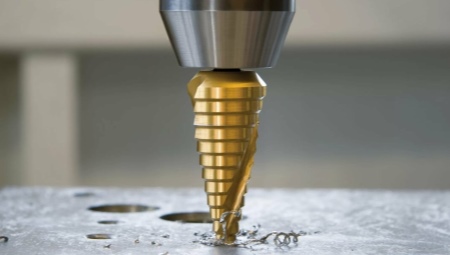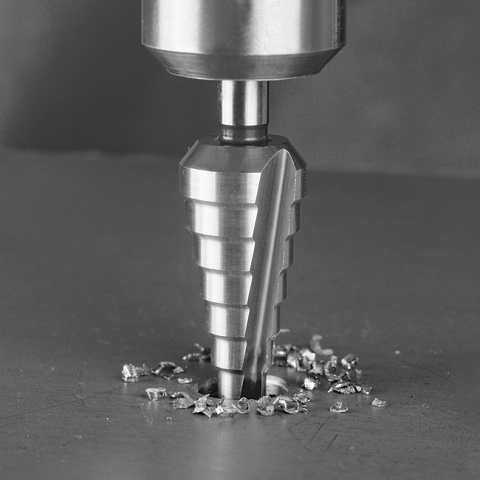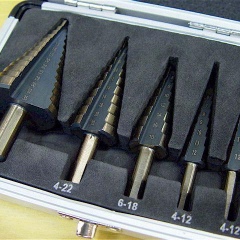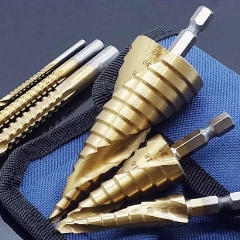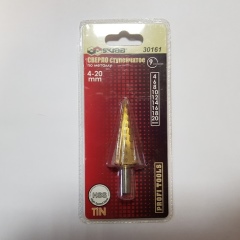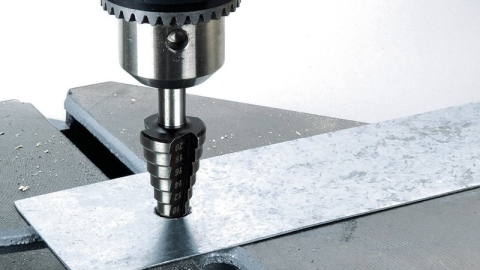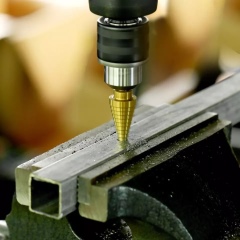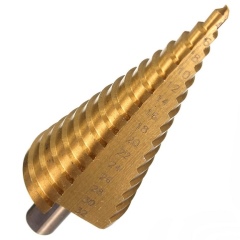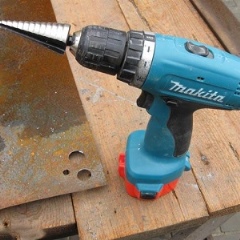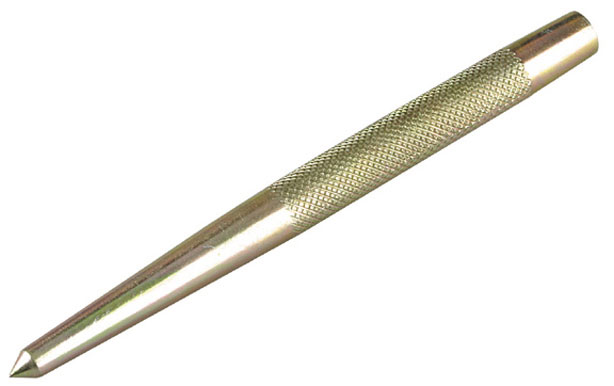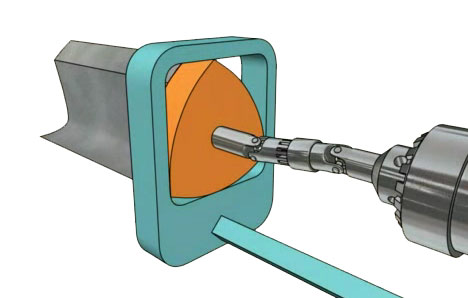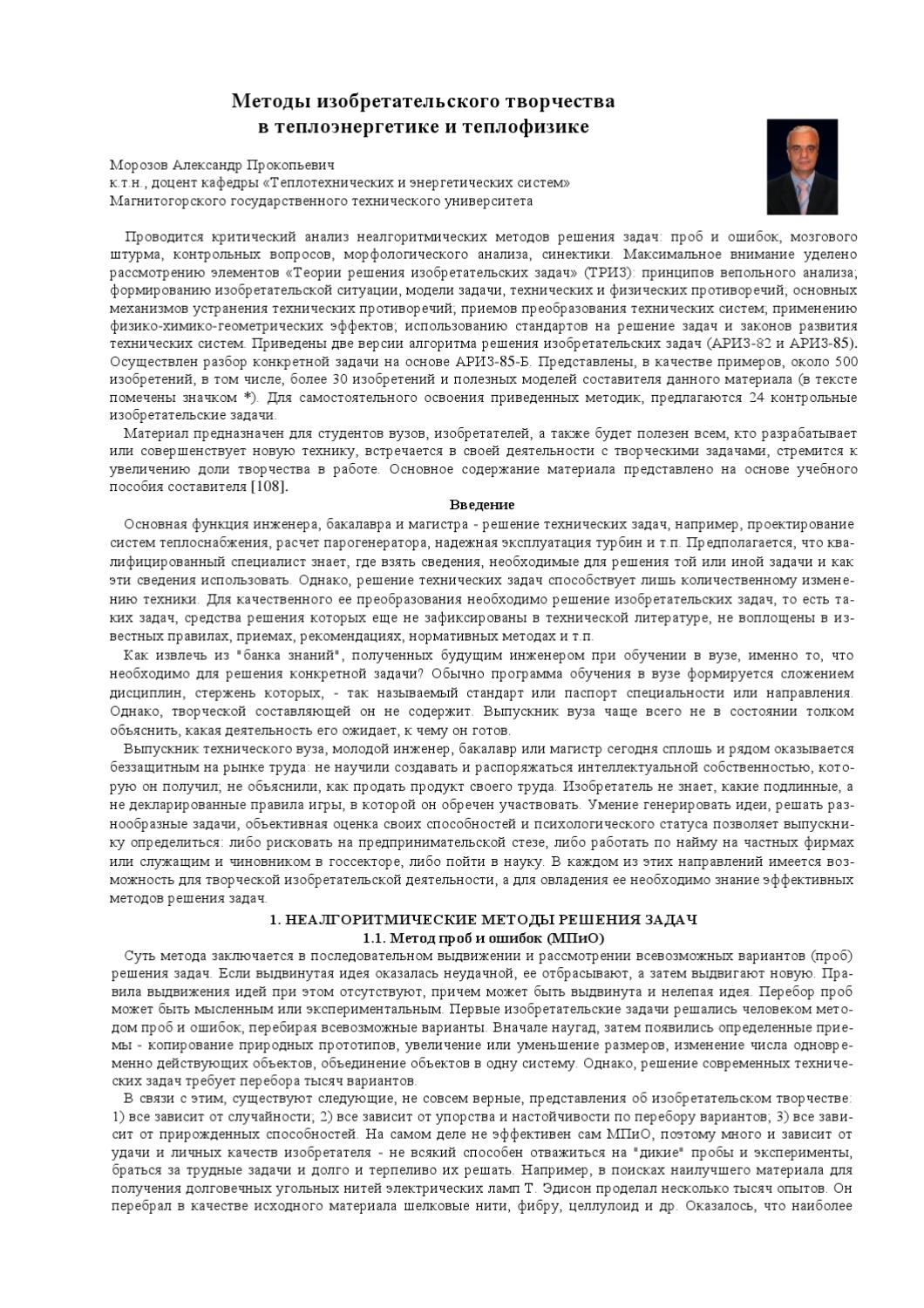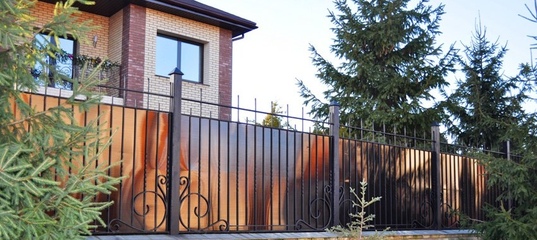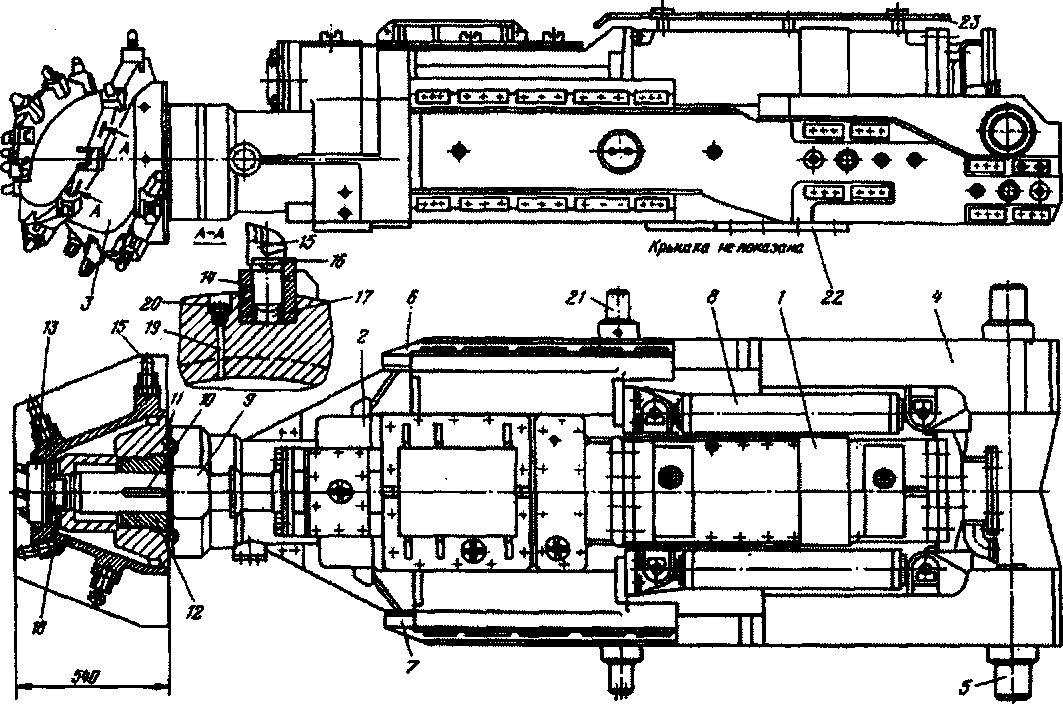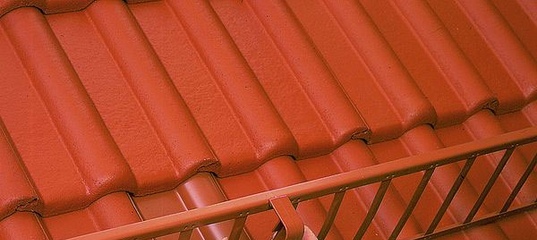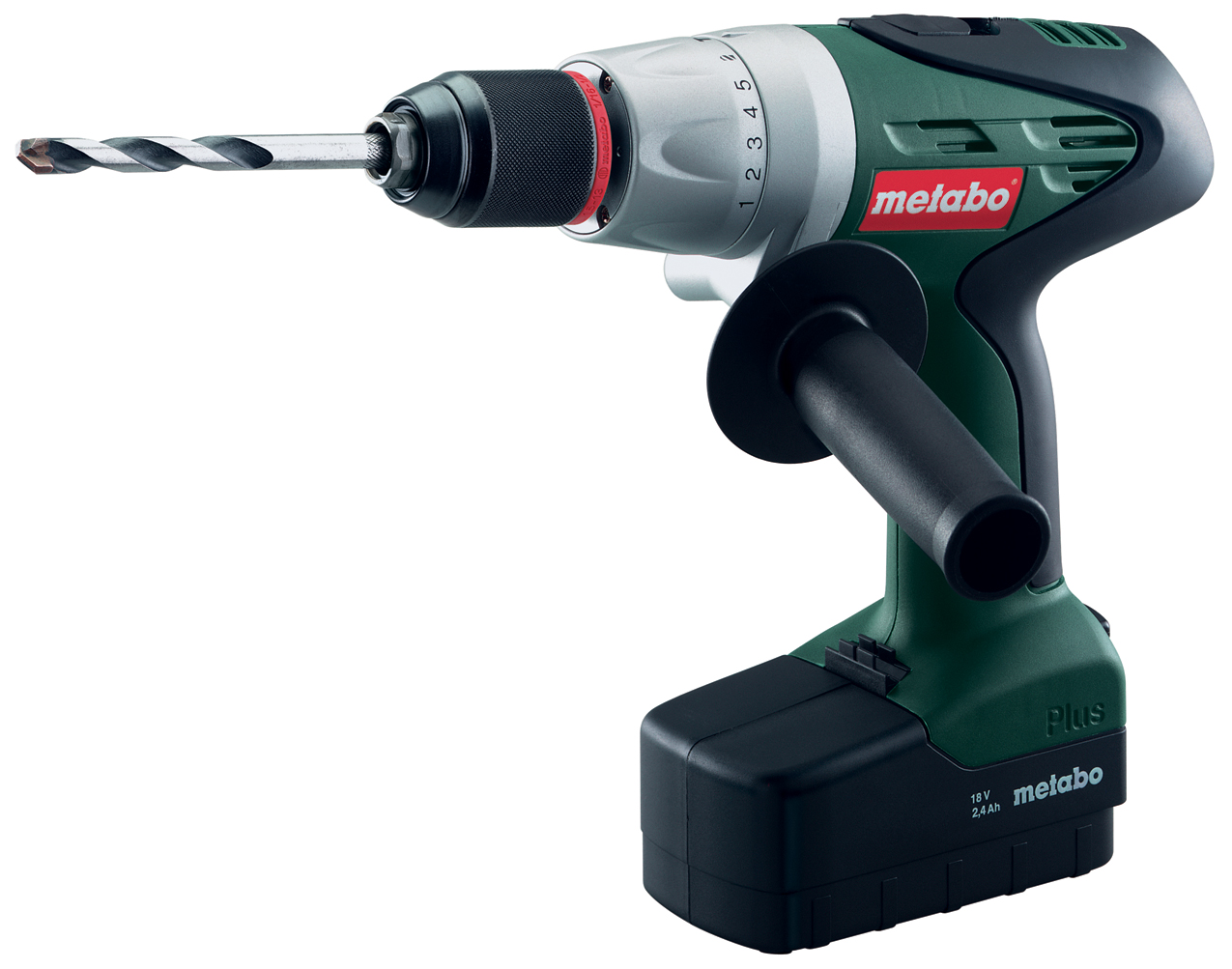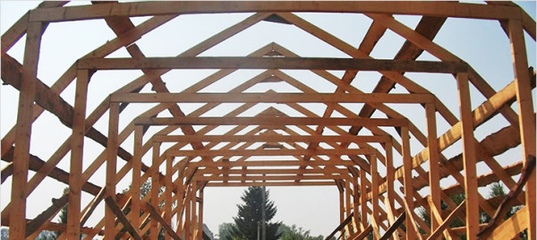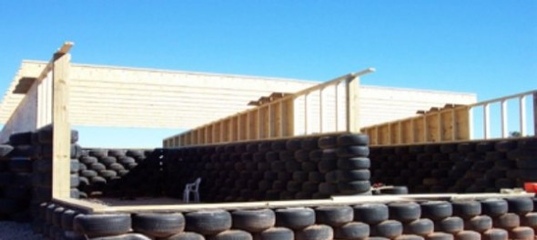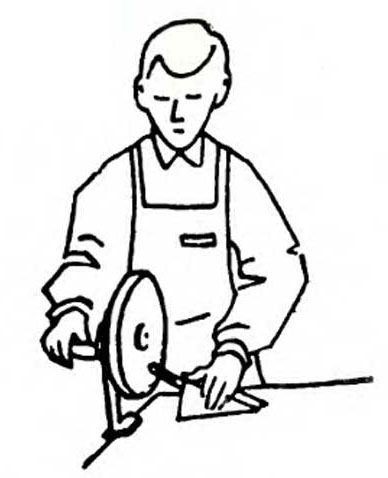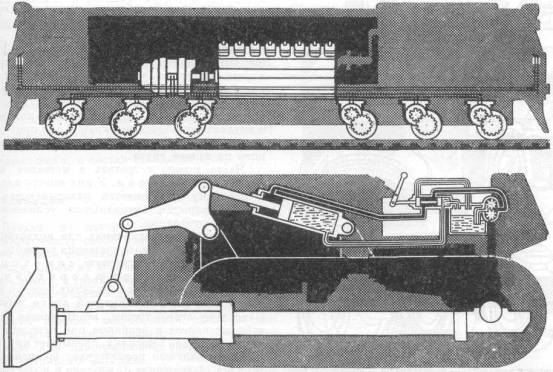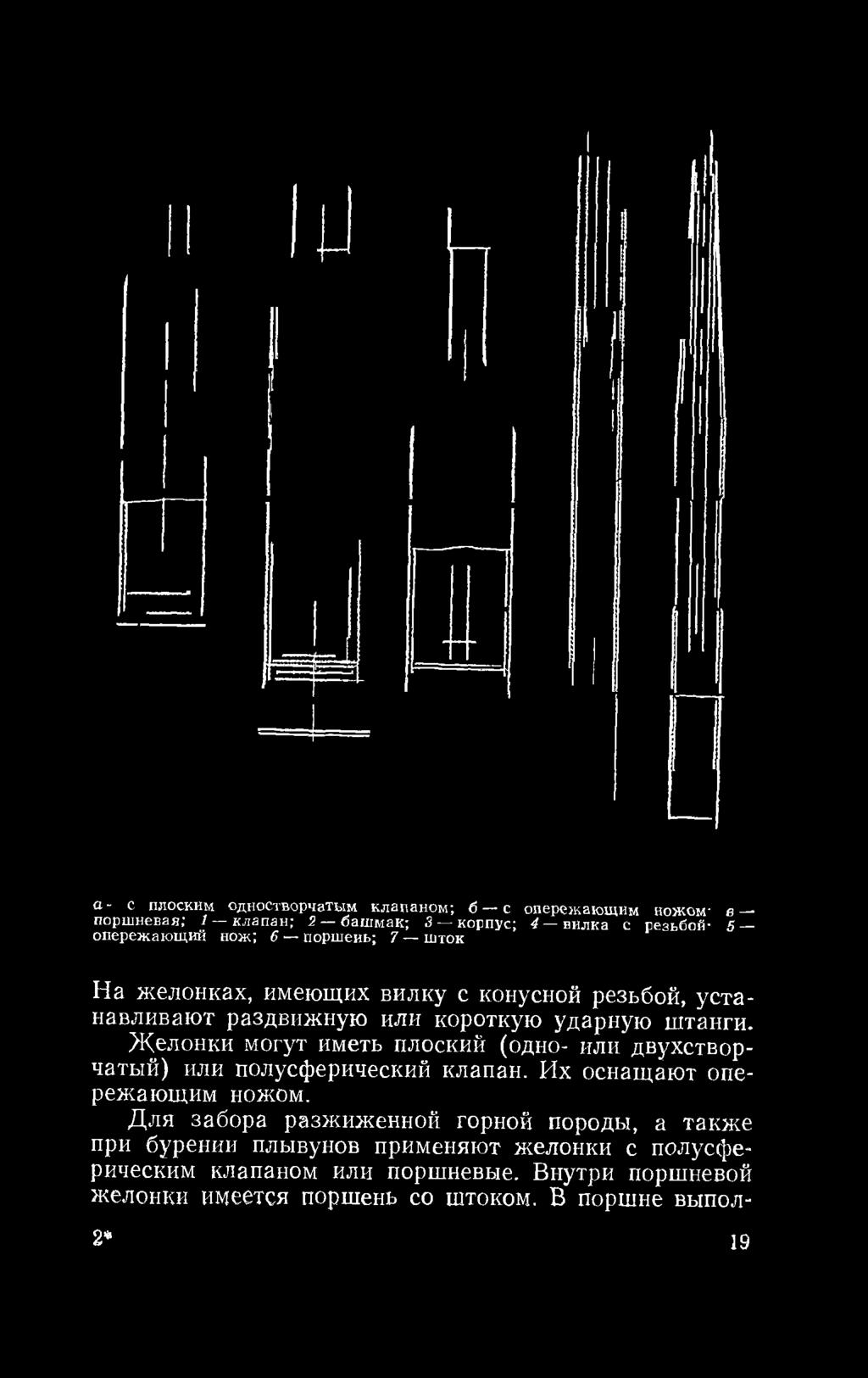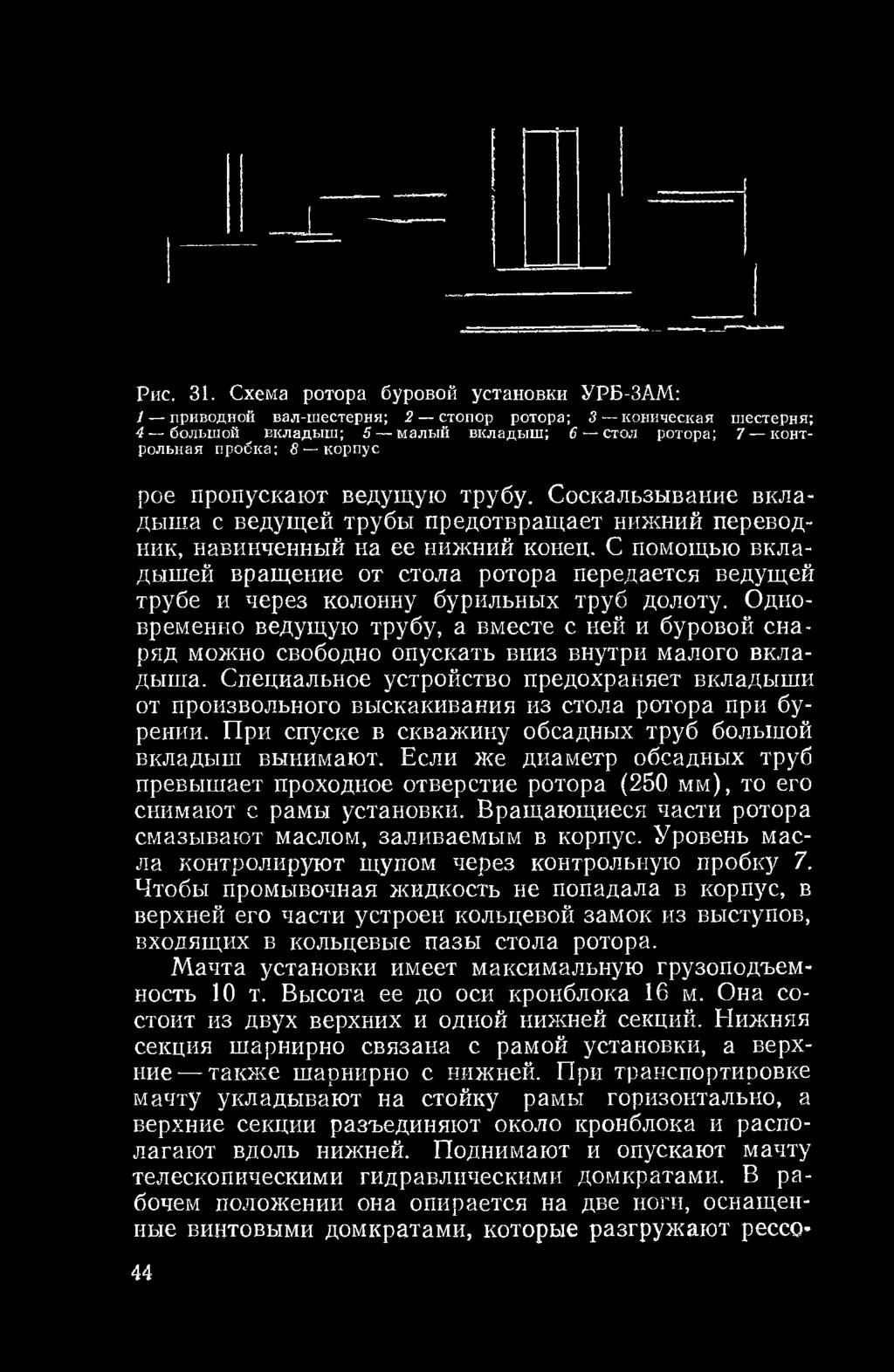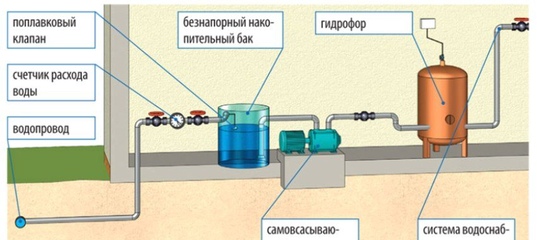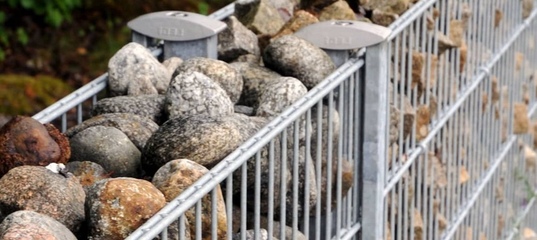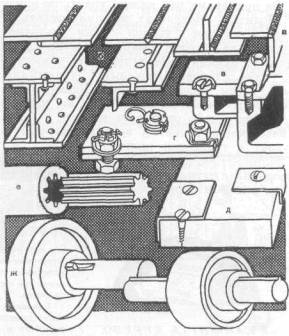Application area
- ferrous and non-ferrous metals;
- wood;
- plywood;
- plastic;
- drywall.
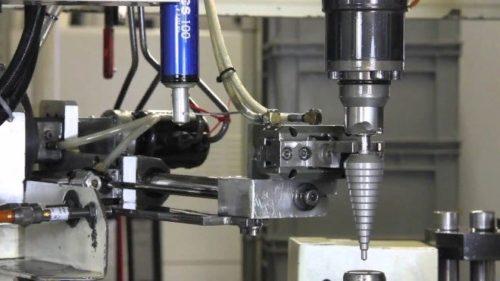
The device manifests itself best of all when drilling sheet-shaped blanks. In addition, drills are used as a means of preparing holes in large parts and structures. In this case, the drilling depth should not exceed 6 mm.
The original shape allows you to get high-quality holes without irregularities and burrs. When moving to the next step, an automatic chamfering occurs.
Inexperienced craftsmen believe that it is difficult to find use for cone drills in everyday life. In fact, such devices are guaranteed to come in handy in the household, especially during repairs. Step drills are an indispensable tool when installing electrical wiring. With their help, it is convenient to drill holes in the profile (0.5–0.7 mm thick) to pull the corrugation. The use of any other device will lead to metal biting, which poses a threat of damage to the entire structure. The drill is also useful in the case of installing new devices, when there is a need for an additional hole in the electrical panel, the thickness of which does not exceed 1 mm.
How to use?
It is not enough to choose a drill, it is also important to be able to use it correctly. For the successful operation of the tool, several rules should be taken into account:
when performing the task, you should pay attention to the strength of the material in which the holes are drilled;
if drilling is required in a metal sheet with a thickness of more than 5 mm, it is necessary to apply cooling of the tool, preventing its overheating and deformation of the drill;
during processing, it is recommended to avoid sudden movements and distortions so as not to damage the product and maintain the quality of the hole;
the use of a drill in a machine requires compliance with a certain angle of the cone relative to the working surface.
Often during use of the drill in case of large volumes of work, the sharpness of the blade decreases. Then it is recommended to sharpen the element. It should be noted right away that the cutting edge is usually sharpened. For the procedure, you will need a coolant that will prevent deformation of the geometry of the working surface.
Drill sharpening should be carried out using fine-grained abrasives. Before doing this, it is recommended to securely fix the cutting element.

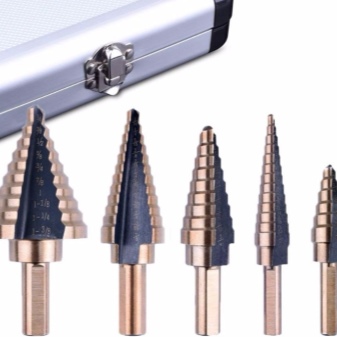
Which step drills for metal are better - manufacturer's choice
An important criterion when buying a stepped nozzle is the manufacturer, since only products from trusted companies will have the required characteristics.
Both domestic and imported nozzles are presented on the market. The best Russian samples include the Zubr, Interskol and Tulamash step drills. All of these companies offer high quality products, both individually and in kits, with a subsequent warranty.
Among the imported manufacturers are Bosch, Haisser, Ruko Precision Tools.
What is it and what is it for?
Today the tool market is represented by a large selection of drills from various manufacturers. Regardless of the type of product, they are designed to perform a variety of metal processing operations. The advantage of the step drill lies in its design. Improved cutting edge strength results in long product life and reduces the need for regular repairs.
The conical step drill is the most popular and versatile tool. With its help, steel sheets with a thickness of 5-6 mm are processed in order to obtain reliable holes.
Also, the tool can be used to work with the following materials:
- plastic;
- drywall;
- wood.
The two-stage drill is a specific bit used in various machine tools. The design of the drill contains a working part, which provides rotation of the drill, and a shank in the form of a cylinder or hexagon.
The design work area is divided into 3 parts:
- a small tip required for pre-drilling;
- beveled transitions provided between the steps (such a device allows you to get rid of burrs);
- incisal edge: this is used to create holes.
The drill shank comes in a variety of shapes. It is determined depending on the area in which you plan to use the tool. This category also includes multi-stage drills.
The shape of the drill is based on the cone. With its help, it turns out to process the material by achieving high speeds, using the herringbone technology. In this case, the quality of the resulting hole edge will be high even in the case of drilling thin sheet steel.
The drills are equipped with a sharp tip, which prevents the need for additional tools. With the help of such units, it is possible to facilitate the execution of work on the processing of metal or other materials. The device is used in the following areas:
- construction;
- automotive industry;
- repair work;
- landscape work.
Each cutting tool has distinctive characteristics as well as positive and negative properties. If we consider drills, then the following should be attributed to the advantages of such equipment.
Possibility of drilling holes with one bit.
Resistant to wear and tear.
No need for punching the place of drilling when performing the task. The tip of the drill cuts into the material almost immediately.
Combination of functions of different tools.
Smooth transition of a smaller diameter to a larger one
This option allows you to reduce or completely eliminate material deformation, which is important when it comes to processing thin sheets.
Versatility of use. The drills can be used as basic equipment on a stationary machine or on a hand-held power tool.
The use of abrasive spraying to increase the strength.
No need for regular sharpening.
Species overview
The design of the product provides for two main parts: a working part (the so-called body with a tip) and a shank. Since the body is tapered, the tip is pointed. This eliminates the need for centering devices and can handle even the toughest material. Neither a file nor a sander is required to bring the hole to a perfectly flat shape, the drill itself works very cleanly. The steps of the steps of the product may differ, their size depends on what type of tool has.
If the size of the hole that the drill can make is less than 1.2 cm, then the step is 1 mm. If more than 1.2 cm, then the step is also larger and is already 2 mm. Most often, there are products with a pitch of 5 mm.
The shank is the part with which the product is fixed in the chuck of the electric drill. Depending on what kind of drive mechanism the product has, the shank can be cylindrical, triangular or hexagonal. Trihedrons or hexagons create an obstacle to turning the drill during operation of the electric drill.
Products in the form of a cone and step drills are different from each other - the working part has either a smooth surface or ribbed in the form of steps. Tapered gimbal represents step-by-step annular transitions along which a longitudinal groove in the form of a spiral with cutting edges passes. If you use such a product, then the finished hole cannot be adjusted manually - only on a special machine.Combination drills are designed to form through holes and to cut holes in thin sheets of metal.
By diameter
Herringbone step drills differ in diameter - it can be either minimum or maximum. The diameter can be up to 58 mm.
By material
Step drills are made from steel, but steel can be very different: from brittle, unhardened, to super-strong alloys. Its functions depend on how strong and hardened steel is used for the production of the gimbal.
The shape that the shank has is also important. The shank can be round, triangular or hexagonal.
By the number and step of steps
According to this criterion, drills are also divided into several groups: two-stage and multi-stage. The more steps, the wider the range of actions that the user can perform with the gimbal. As for the two-stage drills, this is a special category of tools equipped with a countersink directly in the shape of the screw head.
By type of protective coating
What kind of protective coating is applied to the product can be easily identified by its color. Gray means there is no coverage. Black - the steel is hardened. Gold or silver indicates that the product has high strength, as well as that it is sprayed or abrasive.
By fortress
There are drills for metal (thin-leaf and thick-leaf), wood, plastic, glass. Steel is used to make any of them, but the thickness, configuration and appearance may vary.
Marking
In a stepped drill, the diameter ranges from 4-80 mm, and the length is 58-85 mm. Shanks can also have different diameters - 6-12 mm. The stronger the steel used to make it, the stronger the tool will be. If the drill is gray, then this means that the steel was not hardened, if it is black, then the steel has been treated with steam, which means that it is much stronger and more durable. Products with a golden hue are even more high-quality, and the strongest and most wear-resistant drills are titanium-coated or diamond-coated.
A special marking is applied to each product, by which you can find out from what material (including the brand) it is made, the diameters that it has, the step step. Also, the marking contains information about the hardness and diameter of each step. For example, HRC means that high quality high speed steel was used to make the drill.
Types of stepped drills
- Minimum and maximum diameter. There are tools for drilling holes up to 58 mm.
- Manufacturing material.
- Shank shape: round, triangular or hex.
- Number and step of steps. Multi-stage drills offer the user more freedom of action.
- Type of protective coating.
- The strength of the processed material.
Number and shape of working grooves

There are three types of grooves, which differ in shape:
- longitudinal;
- straightforward;
- spiral.
Each design has its own advantages. For example, a straight edge lends itself much better to dressing and sharpening, while a spiral shape contributes to a softer and smoother ride. It is such a tool that is recommended for drilling thin-walled materials.
The quality of processing at high and low speeds depends on the number of grooves.
Design features of a stepped drill
The appearance of this cutting tool is determined based on its name - a conical stepped drill. Sometimes in ordinary conversation you can hear an interesting term for this instrument - carrot. It resembles a well-known geometric figure - a cone. However, its outer surface can be not only smooth, but also stepped. By design, it practically does not differ from standard tools, it has:
- a guide part on which the cutting edge is located;
- a leash that passes into the neck of the instrument;
- shank of a given shape (depending on the drill chuck).
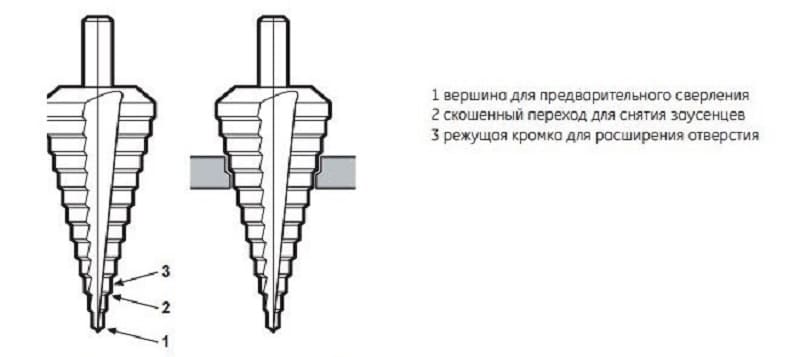
Step drill design
The conical drill for metal is significantly different in the guiding part, which is made in the following versions:
- metric cone;
- enlarged elongated cone;
- tool cone;
- the so-called Morse taper.
Of all the four types, the third is considered the most common, that is, the instrumental cone. It is the most versatile for most boring machines and numerically controlled machines. The range of variation of permissible diameters is wide enough. For example, for metric tapers, it ranges from 1mm to 20mm. The Morse taper can have a range of 6 to 30 mm. All of them are manufactured in accordance with GOST 2092-77.
The top of the cone is divided into three component parts:
- apex tip for pre-drilling;
- the first beveled transition for removing the so-called burrs (roughness);
- special cutting edge (used for the subsequent expansion of the hole).

Drill chuck with Morse taper
To expand the cutting capabilities of a multistage metal drill, abrasive spraying is applied to its surface. It is made from diamond or titanium chips. This improves cutting properties and reduces the frequency of sharpening.
To choose the right step drill for metal, you need:
Learn more about the characteristics
Understand the capabilities of a multistage cone drill, for example in metal.
Pay attention to the color of the product. If the metal step drill has a steel gray color, this proves that the drill has not been heat treated.
You cannot hope for high performance. A yellow or golden color indicates that the metal has been processed, all so-called internal stresses have been removed in it. If the surface of a tapered step drill for metal has a bright golden hue, we can safely assume that it contains a titanium nitride alloy. The addition of this alloy significantly increases the wear resistance. These are the most expensive tools. Their reliability and durability fully compensates for this disadvantage. Black color indicates that it has been treated with hot steam.
Estimate standard sizes. Usually, a marking is applied to a multistage drill for metal, consisting of numbers and Latin letters. For example, ∅4-15 / 2 HRC 61 ± 2. The first number indicates the smallest diameter, the second, respectively, the largest. The number located through the oblique determines the step of changing the diameters. In our case, it is equal to 2, that is, it will be diameters, 2, 4, 6, and so on up to 12. Therefore, it is called a step drill for metal. Three Latin letters indicate the grade of steel from which it is made. In our example, this is high quality high speed steel. If the name of the steel is HSS, you can safely use it for high-speed machining. The last two digits with the indicated interval determine the Rockwell hardness.
Study the trademark of the company that manufactures this instrument. It is advisable to consult with experts about the quality of such a device.
Find out if multiple sharpening of a step drill is permissible for metal.

Conical and step drills
When choosing a conical drill for metal, you should always remember that it is intended for drilling holes only in material, the thickness of which does not exceed five millimeters.
Advantages and disadvantages
Any cutting tool has a number of positive and negative qualities. This fact also applies to cone drills. Before you go shopping for a cutting element, you need to brush up on its merits and demerits.
An important advantage of the taper drill is the ability to create holes of different sizes. Just one cutting element can replace a whole set of tools that were previously used by most craftsmen.
Another plus is durability
Thanks to this characteristic, their production is reduced. Do not forget that the speed of creating holes with a cone drill is several times higher than that of any other tool. The speed of the working process protects the tool from overheating, due to which a defect can occur.
The stepped type of drills, reminiscent of the image of a tree, have a sharp tip, due to which the cutting product cuts into the work surface.
If required, this cutting tool can be used as a grinder.
The conical shape smoothly expands the diameter of the hole in the workpiece during operation, thereby reducing the risk of deformation of the working surface to zero.
Another significant advantage is the way it is operated. Conical drills can be installed in hand-held equipment and large stationary machines.
The top of the tapered tool can be coated with a special coating such as titanium or diamond shavings. Due to this addition, the strength of the tool increases significantly, and the requirement to sharpen the edges is significantly reduced.
One of the important advantages of a tapered tool is its versatility. The drill easily processes material with a soft structure
But when working with metal, the master should take a little care, since a metal sheet with a thickness of more than 7 mm may not give in.



